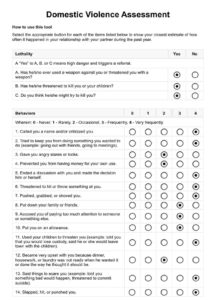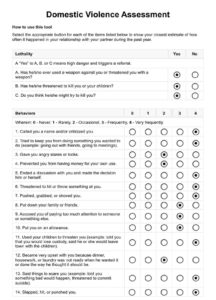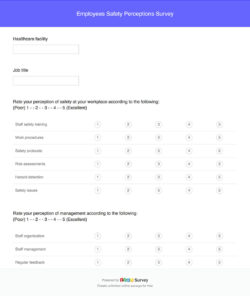Understanding and addressing domestic violence is a critical endeavor that requires careful consideration and a compassionate approach. When we talk about creating a survey template for domestic violence, we are not just discussing a mere set of questions; we are delving into a tool that can uncover hidden truths, identify urgent needs, and ultimately guide efforts to provide support and safety for survivors. It is about crafting something that truly gives a voice to those who have experienced unimaginable hardships, allowing their experiences to inform and shape vital interventions.
The importance of a well-designed survey in this context cannot be overstated. It serves as a bridge, connecting the experiences of individuals with the broader understanding of the issue within communities and organizations. A thoughtfully constructed template ensures that the data collected is not only accurate and comprehensive but also gathered in a way that prioritizes the safety, anonymity, and dignity of the respondents. It is a delicate balance of seeking necessary information while maintaining the utmost ethical standards and empathy.
Crafting a Compassionate and Effective Survey
Designing a survey template for domestic violence requires a deep understanding of the sensitivities involved and a commitment to ethical data collection. This isn’t just about asking questions; it’s about creating a safe space for individuals to share their experiences without fear of judgment or retribution. Every question must be carefully considered for its potential impact, ensuring it elicits useful information while remaining respectful and non-triggering. The language used should be clear, simple, and culturally sensitive, avoiding jargon or terms that might be misinterpreted or cause distress. It is vital to emphasize anonymity and confidentiality from the outset, building trust with the respondent before they even begin to answer.
When developing such a survey, think about the journey of someone filling it out. They might be in a vulnerable state, and the act of recounting their experiences can be emotionally taxing. Therefore, the survey should flow logically, starting with less sensitive questions and gradually moving towards more personal or detailed inquiries. It should also include options for skipping questions or ending the survey if the respondent feels uncomfortable at any point. Providing resources and support helplines at the beginning and end of the survey is absolutely crucial, ensuring that help is immediately accessible if needed. The goal is to gather data that can inform effective interventions and support systems, but never at the expense of a survivor’s well-being.
Key Elements to Include in Your Template
- Safety and Disclosure Protocol: Start with clear statements about anonymity, confidentiality, and what to do if the respondent feels unsafe or triggered. Offer immediate crisis resources.
- Demographic Information (Carefully Collected): Include age, gender identity, relationship status, and general location (e.g., urban/rural) without compromising anonymity.
- Relationship Dynamics: Questions about the nature of the relationship, the duration of the abuse, and whether children are involved.
- Types of Abuse Experienced: Cover physical, emotional, psychological, financial, and sexual abuse with clear, non-leading questions. Provide examples rather than just terms.
- Impact Assessment: Explore the effects of the violence on mental health, physical health, employment, housing, and social life.
- Help-Seeking Behaviors: Inquire if they sought help, from whom, and what barriers they faced. This helps identify gaps in support services.
- Resource Needs: Ask what specific resources or support they currently need or would have found helpful (e.g., safe housing, legal aid, counseling).
Pilot testing your survey template for domestic violence with a small, trusted group who understand the context is an invaluable step. This allows you to identify any unclear questions, insensitive phrasing, or logistical issues before wide distribution. Feedback from this process can help refine the survey, making it more effective and user-friendly, and ensuring it truly serves its purpose of collecting meaningful data in an ethical and compassionate manner. Continuous improvement based on lived experiences is key.
Implementing and Analyzing Your Survey Data
Once your survey template is meticulously crafted, the next challenge lies in its careful implementation and the sensitive analysis of the data collected. Disseminating a domestic violence survey requires strategic thinking to reach the intended audience while ensuring their safety and privacy. This might involve partnerships with trusted community organizations, local shelters, support groups, or online platforms specifically designed for secure and anonymous communication. The method of distribution should always prioritize the respondent’s comfort and ability to complete the survey in a safe and private environment, free from potential perpetrators.
During the data collection phase, maintaining the highest standards of data security and confidentiality is paramount. This means using secure online platforms with robust encryption, or if collecting physical surveys, ensuring they are stored in locked, inaccessible locations. Only authorized personnel, trained in trauma-informed care and data privacy, should have access to the raw data. Remember, the information gathered is deeply personal and sensitive; any breach could have severe consequences for survivors.
When it comes to analyzing the data, a qualitative and quantitative approach can be incredibly insightful. Quantitative data, such as percentages and frequencies, can help identify patterns, prevalence rates, and common needs. For example, you might discover that a certain percentage of respondents faced financial abuse, or that many struggled to find affordable housing after leaving an abusive situation. Qualitative data, gleaned from open-ended questions, provides rich, nuanced narratives that offer deeper understanding of individual experiences, challenges, and resilience. Themes emerging from these narratives can shed light on the emotional toll of violence, the effectiveness of existing support systems, and areas where services are lacking.
The insights gained from this analysis are invaluable. They can inform policy changes, highlight specific gaps in community resources, guide the development of new support programs, and strengthen advocacy efforts. The data can empower organizations to lobby for better funding, create more tailored interventions, and raise public awareness about the pervasive nature of domestic violence and its multifaceted impacts. Ultimately, the purpose of this entire process is to transform raw data into actionable knowledge that drives positive change and fosters safer environments for all.
The journey of creating, distributing, and analyzing a survey focused on domestic violence is a profound commitment to understanding and combating a complex societal issue. It’s a powerful way to illuminate the hidden struggles faced by many, transforming individual narratives into collective data that can drive significant change. By approaching this task with empathy, ethical rigor, and a focus on safety, we contribute to a future where survivors are better understood, supported, and empowered.
The ultimate goal is to move beyond mere data collection to a point where this information actively shapes policy, improves service delivery, and fosters communities where domestic violence is not tolerated and its survivors find the comprehensive help they need. This systematic approach, grounded in compassion, becomes a powerful tool in the larger fight for justice and well-being.


